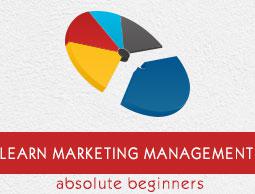Marketing Management - OBB
Organizational buying behavior (OBB) can be defined as the process of how companies or organizations buy goods and services. The buying behavior of an organization is a step-by-step process. It is not a one-night journey to launch a product and change the market behavior. It is a time-consuming procedure and is done in a synchronized manner.
OBB plays a very important role in the modern marketing concept. It is a well-defined and properly maintained marketing process with wide contact between the buyer and seller.
Characteristic Features of OBB
The major features that decide the buying behavior of an organization as a whole can be learnt from the following points −
It is an analytical process.
Number of individuals engaged is more.
It handles large quantity marketing.
Purchase criteria are precise and well defined.
There is broad contact between buyers and sellers
It includes user, influencer, decider, buyer and gatekeeper.
After seeing these features, we have an idea of the concept of organizational buying behavior. It is not always the money that decides what to buy but some other features apart from money are also very important.
Determinants of OBB
Determinants of OBB can be defined as the agents that originated OBB. There are two determinants of the buying behavior of an organization.
Organizational factors like objective, technological capacity, company’s structure, human resource criteria and many more.
Psychological factors like perception, motivation, attitude, belief and many more.
After having a quick look on these determinants or agents of buying behavior of a firm, let us look at the participants of OBB.
Participants of OBB
Participants of OBB are the people involved, responsible and answerable in the buying behavior of an organization.
We can see the following seven different types of participants in OBB −
Initiator − The one who initiates the buying of the product.
Influencer − The one who influences others or, say, the organization, to buy a product.
User − The one who is going to use the product.
Decider − The one who decides if the product should be used.
Approver − The one who permits or approves the use of the product.
Buyer − The one who is going to buy the product.
Gatekeeper − The one who watches the buying behavior.
Participants in OBB are responsible for their fields respectively.
Steps of OBB
Organizational buying is not an easy activity as most people think of it. The process of OBB consists of the following steps and each one is very important and affects the next one −
- Problem recognition
- General need
- Product specification
- Searching for potential supplier
- Value analysis
- Vender analysis
- Order routine specification
- Multiplicity surrounding
- Performance Reviews
Stages in Organizational Buying Process
Following are the stages in the organizational buying process −
Problem Recognition − It is the first stage of the business buying process. In this stage, someone in the organization recognizes an issue or need that can be met by acquiring a good or a service.
General Need Description − At this stage of business buying process, the organization briefs the general features and quantity of a needed product.
Product Specification − At this stage of the business buying process, the buying company decides on the item and specifies the best technical product features for a needed item.
Value Analysis − This stage involves an access to cost reduction, in which elements are studied carefully to select if they can be redesigned, standardized or made by less costly methods of production.
Supplier Search − At this stage of the business buying process, the consumer tries to find the best sellers.
Proposal Solicitation − In this stage of the business buying process, the buyer invites qualified suppliers or producers to submit the proposals or options they have.
Supplier Selection − In this stage of the business buying process, the buyer reviews plans and chooses a supplier or suppliers.
Order-routine Specification − This is the stage of the business buying process in which the buyer writes the final order with the selected supplier(s), enlisting the technical specifications, quantity required, expected time of delivery, return policies, manufacturing date and warranties.
Performance Review − In this stage of the business buying process, the buyer rates his satisfaction with suppliers, deciding whether to continue, develop or drop them.
Types of Organizational Market
In order to facilitate the buying behavior of a market, we divide the organizational market into these four types.
Product Market
Producers purchase items and services and transform them into a sellable product, which they sell to their customers for the purpose of gaining profit; this is known as product market. Examples of producers are farmers, manufacturers and construction companies.
Retailer Market
The market for the sale of products or services to consumers instead of that to producers or intermediaries is known as the retailer market. For example, a shoe store sells to people who will most likely wear the shoes. It does not include the sale of the shoes to other stores who will resell them. The retail market contrasts with the wholesale market.
Government Market
The market where the consumers are national, state, and local governments is known as the government market. Governments buy both products and services from the private sector.
Governments purchase the same types of products and services as the private sector consumers, in addition to some more exotic products such as aircraft carriers, fighter jets, tanks, spy satellites and nuclear weapons.
International Market
The market where the marketing principles are applied to more than one country is known as the international market.
Market of product is decided by the product type. A product can be introduced to more than one market or the product can be specifically introduced at any single market type.


